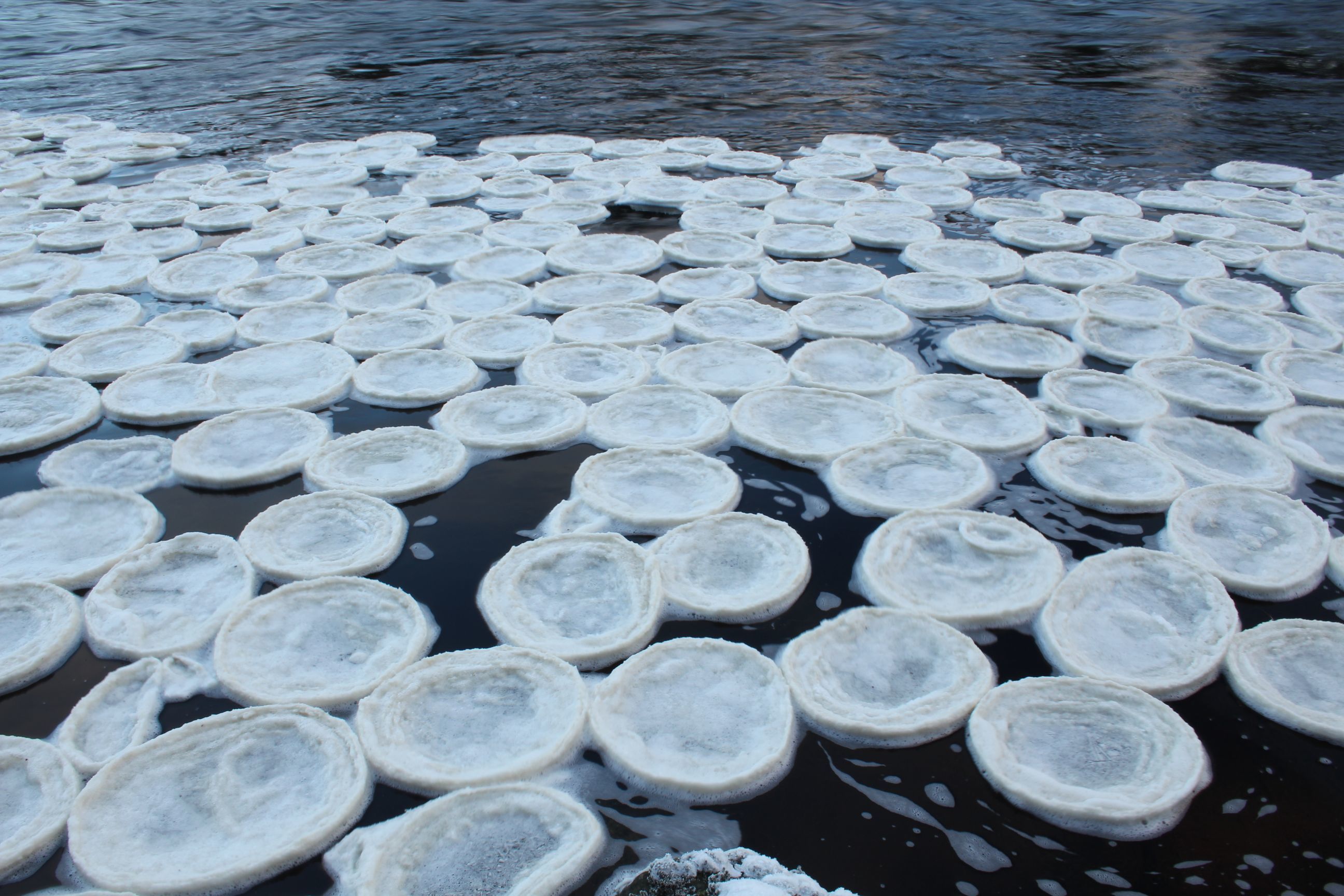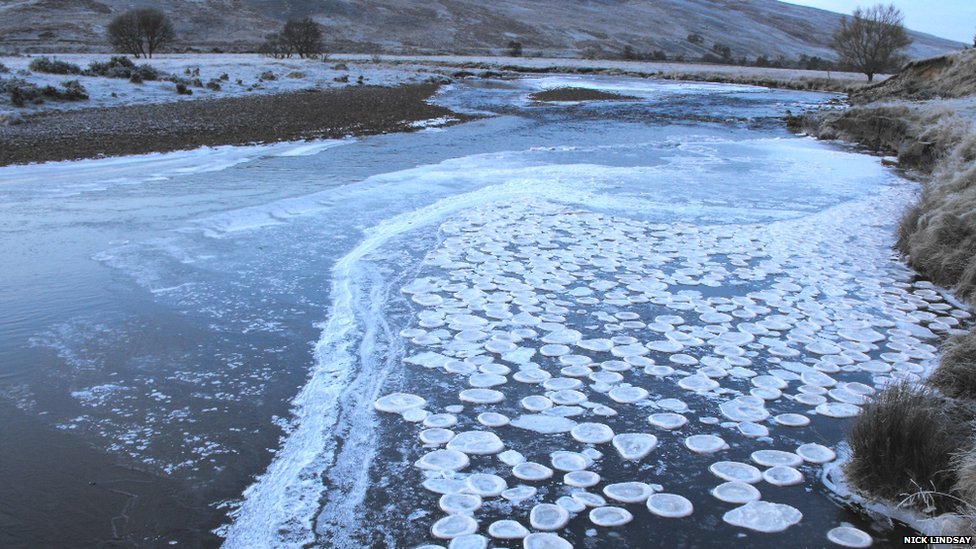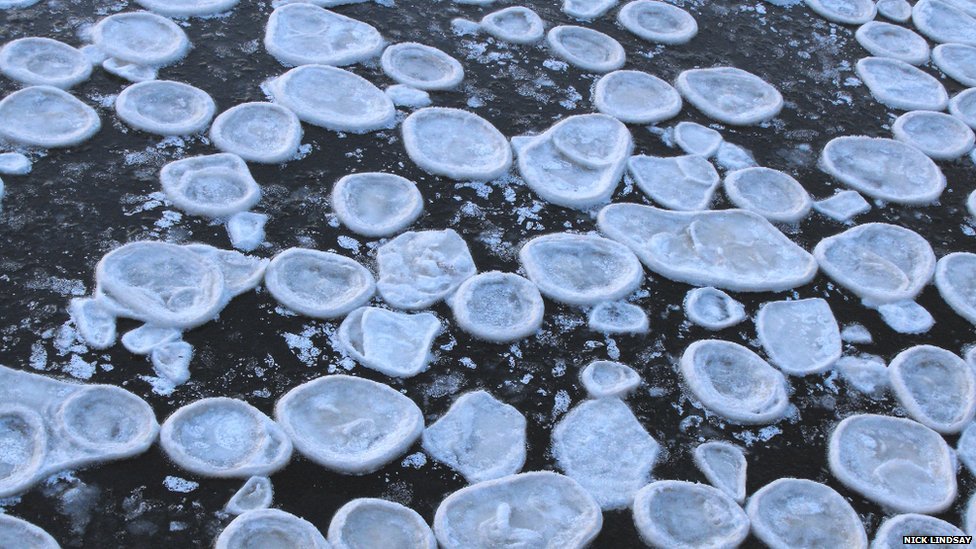'Ice pancakes' the size of dinner plates?
_https://www.facebook.com/metoffice/photos/pcb.10152663243994209/10152663236414209/?type=1&permPage=1
Jamie Irquhart, a biologist from The River Dee Trust, recently found these on the Lummels Pool at Birse.
How do these strange discs form? The team think that the foam floating about on the water starts to freeze, probably at night. Bits of frozen foam got pushed around in the eddy, and in the ensuing collisions, became roughly circular. Each disc then grew when smaller pieces of unfrozen foam struck to the disc and then froze in place.
You can read more about them at _http://bit.ly/1qZQfCH
River Office Blog
Ice Pancakes on the Dee,
17th December
By Joanna
Jamie, our Biologist found these recently on the Lummels Pool at Birse, do you know what they are? He has seen them the size of saucers before but these were as big as dinner plates!
We weren't sure what they are called but we found this explanation that we think fits. What we think happened is this: Foam floating about on the water started to freeze, probably at night.
Bits of frozen foam got swirled around in an eddy, and became roughly circular. Perhaps each disc grew when smaller pieces of unfrozen foam struck the disc, adhered and then froze in place.
The raised rims are undoubtedly due to the collisions
but what about the inner lines? The air temperature was colder at night due to the clear-sky conditions but warmer in the day
, meaning the discs may have grown at night, then during the day, when the discs softened in the sun, further collisions between the “pancakes” caused the rims to be pushed up. The next night further growth would have occurred, followed by a new rim the next day.
They are more commonly seen in the Antartic or the Baltic Sea and this is the first time we have seen them on the River Dee. Tjey are a rare occurance and conditions have to be right for them to form.












